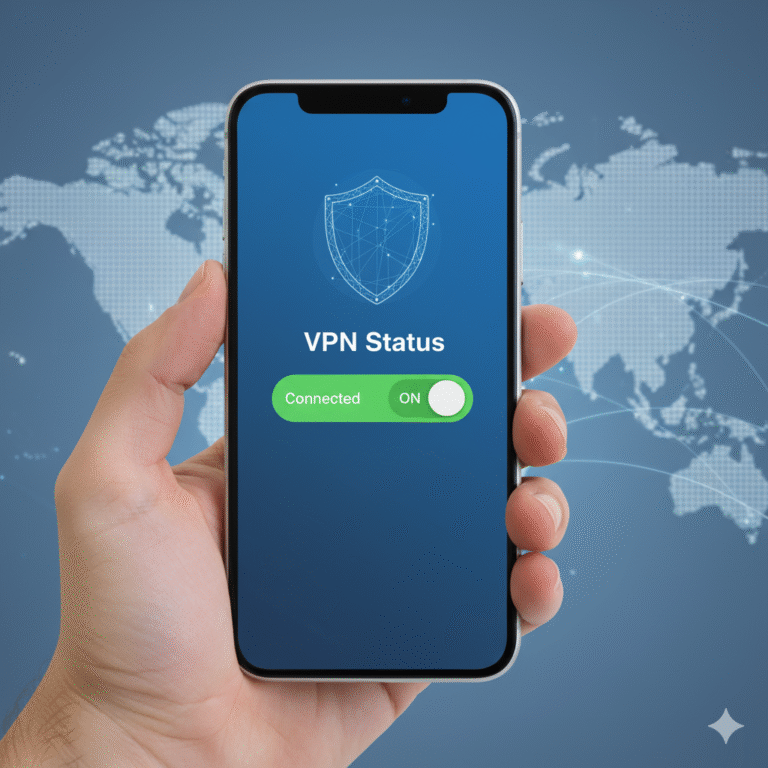Verifying “is my vpn working” is a critical step for IT managers, network engineers, and cybersecurity professionals to ensure secure and reliable network communications. A VPN may appear connected, yet leaks or misconfigurations can expose sensitive traffic. This guide provides practical methods, advanced testing techniques, and insights for maintaining optimal VPN integrity.
How can I tell if my VPN connection is actually active and routing traffic?
The first step is confirming the VPN tunnel is established. Check your VPN client for a connected status and the assigned virtual IP address. To verify routing, use command-line tools like traceroute or ping to destinations outside your local network. A properly functioning VPN should route all traffic through the VPN server, masking your real IP address (source: TechRadar). For enterprise environments, monitoring logs on the VPN concentrator can provide centralized visibility (internal link: what is a vpn concentrator: Secure Multi-Tunnel VPN Device).
What steps should I take to test for DNS leaks when checking “is my vpn working”?
DNS leaks occur when queries bypass the VPN tunnel, exposing visited domains. To test, visit reputable online DNS leak testing sites, or run nslookup commands against external DNS servers while connected to the VPN. Ensure all DNS traffic resolves through the VPN-assigned servers (source: Cloudflare). Configuring VPN clients to enforce DNS resolution through the tunnel mitigates these risks.
How do I verify that my IP address and location change appropriately when my VPN is on?
A simple test is using an IP checker to compare your public IP before and after connecting. The VPN should assign an IP in the selected region. For automated enterprise monitoring, scripts can periodically log assigned IPs to detect anomalies. Cross-checking with multiple geolocation services adds reliability. Persistent discrepancies may indicate split tunneling or traffic bypass issues (internal link: What Is My Ip Address VPN – Check Your Real IP Securely).
How can I detect WebRTC or IPv6 leaks that may undermine my VPN’s effectiveness?
WebRTC leaks in browsers can expose real IP addresses even over VPNs. Disable WebRTC or use browser extensions that block it. IPv6 leaks occur when the VPN client does not support IPv6 traffic. Testing involves accessing IPv6-only resources and verifying the source address. IPv6 traffic may require specialized firewall rules or dual-stack VPN support (source: RFC 8484).
Why might my VPN appear connected but still fail to protect my traffic or get blocked?
Several factors contribute to apparent connectivity without protection:
- ISP or corporate firewall interference
- Protocol mismatches
- Split tunneling misconfigurations
- Server-side issues
Monitoring VPN logs and firewall alerts allows IT teams to detect these hidden failures. Using robust protocols like OpenVPN or WireGuard increases reliability. For detailed troubleshooting, refer to industry guides on VPN connectivity best practices (source: Kaspersky Blog).
Constraints and performance:
Testing conditions impact results. Bandwidth, latency, and device hardware affect performance. Mobile devices may limit VPN throughput compared to desktop clients. ISP throttling or deep packet inspection can cause inconsistent results. Enterprise testing should simulate real-world traffic and consider multiple endpoints. Document baseline performance metrics before deploying new VPN configurations to distinguish between network and client issues.
How do I test my VPN’s performance and stability in a corporate or remote-worker environment?
Measure latency, jitter, and throughput using standardized tools such as iPerf or MTR. Test connections to different regional servers to identify bottlenecks. Automate periodic VPN performance checks to detect slowdowns or instability, especially for remote workers. Combining security verification with performance metrics ensures both protection and operational efficiency (internal link: Does Using a VPN Help with Ping? Find Out Now).
What best practices should IT managers follow to ensure “is my vpn working” checks remain valid over time?
- Schedule regular automated tests for DNS, IP, and leak verification
- Monitor VPN server logs for unusual connections or errors
- Update VPN client software to maintain compatibility with evolving protocols
- Educate remote users on safe VPN usage to reduce misconfigurations
- Integrate VPN verification into overall security auditing frameworks (internal link: how to bind qbittorrent to vpn for secure torrenting)
Maintaining a reliable VPN requires regular testing, awareness of potential leaks, and monitoring for performance and connectivity issues. By following the methods outlined in this guide, IT managers and cybersecurity professionals can confidently answer the question, “is my vpn working,” and ensure secure, stable network operations.



